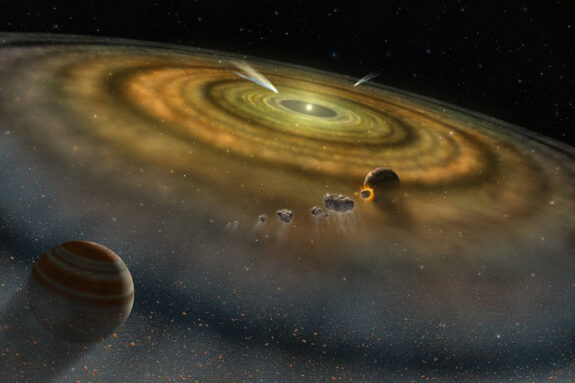Wanying Kang joins EAPS as assistant professor in climate science

The MIT Department of Earth, Atmospheric and Planetary Sciences (EAPS) appoints Wanying Kang to assistant professor in climate science, beginning next July.
Kang is currently the EAPS Distinguished Postdoctoral Fellow (Lorenz-Houghton Fellow), after earning her PhD in applied math from Harvard University and bachelor’s degree in physics from Peking University. Her research uses theory and numerical models to investigate large-scale fluid dynamics of the atmosphere and oceans. Her graduate studies looked at the teleconnection between the Madden-Julian Oscillation (MJO) in the Earth’s tropics and how its effects on Rossby waves, either directly or indirectly, can break the Arctic polar vortex, causing sudden stratospheric warming (SSW) events during the northern hemisphere winter. She explored how warmer climates can enhance MJO activity and frequency of SSW occurrences. Her future work in this area will explore mid-latitude blocking systems and their association with extreme weather forecasting.
Taking off from there, Kang has been trying to apply the theories and modeling tools developed for earth ocean and atmosphere to other planetary bodies, such as high obliquity aquaplanets; disintegrating, ultra-hot, rocky planets; and icy moons like Saturn’s Enceladus. High obliquity, or an extreme axis angle of rotation, affects climate on planets. Kang has been investigating several aspects of these planets, such as, whether they tend to be warmer or cooler than their low obliquity equivalents, how planets’ habitable zones change with axis tilt, differences in atmospheric circulation, and if obliquity affects our ability to detect evaporated ocean water in the planet’s atmosphere. Future research on this could be applied to studying the paleoclimate of Mars — for a possible connection between high obliquity and the loss of its water and an atmosphere — and Saturn’s moon Titan that is partially covered in water.
Recently, Kang has been working with Glenn Flierl and John Marshall, both EAPS professors of oceanography, investigating 1) how the asymmetry of the ice shell thickness on Enceladus developed and evolves — in some northern hemisphere places it could be around 30 kilometers thick, and only a couple of kilometers thick in the southern hemisphere and 2) how salinity and the location of heat source influence the ocean dynamics, tracer transport, and ice shell geometry.
“The reason why we got interested in this problem is because people think that it [Enceladus] may be habitable,” says Kang, pointing to some evidence for the presence of organic matter in geysers and a chemical disequilibrium in the ocean that “may provide some energy to support life [on the seafloor].” Understanding how ocean dynamics couple with ice sheet processes will allow Kang to be able to use properties about the sea to infer properties about the ice, and vice versa. Furthermore, in order to detect these potential biosignatures, researchers would need to know how they are released from the seafloor and are transported to the surface and to a gas phase in the atmosphere — the first part of the process is controlled by the ocean dynamics. In the longer term, Kang will also look into what icy moon studies can tell us about the evolution of Earth’s paleoclimate, specifically how our planet transitioned into and out of “snowball Earth” conditions.
Additionally, she has been working with Sara Seager, Class of 1941 Professor of Planetary Sciences, to understand the atmosphere of disintegrating planets, which are small, tidally-locked (like Earth’s moon), and ultra-hot due to their proximity to their host star. The heat from the star causes the planet’s rock to melt and vaporize forming a tail in front of, or trailing behind the planet, in its orbit. “These planets provide us the unique opportunity to peek into the interior and study the planet’s composition and formation.” says Kang, “We are lucky to be born in an era with a great observational power.”
Kang hopes to bridge multiple geoscience fields, applying tools from climate science on Earth to planetary science questions, and has a demonstrated aptitude for developing thought-provoking questions. “We can always learn more about our Earth from other planetary bodies and vice versa, if we keep our mind open,” says Kang.


